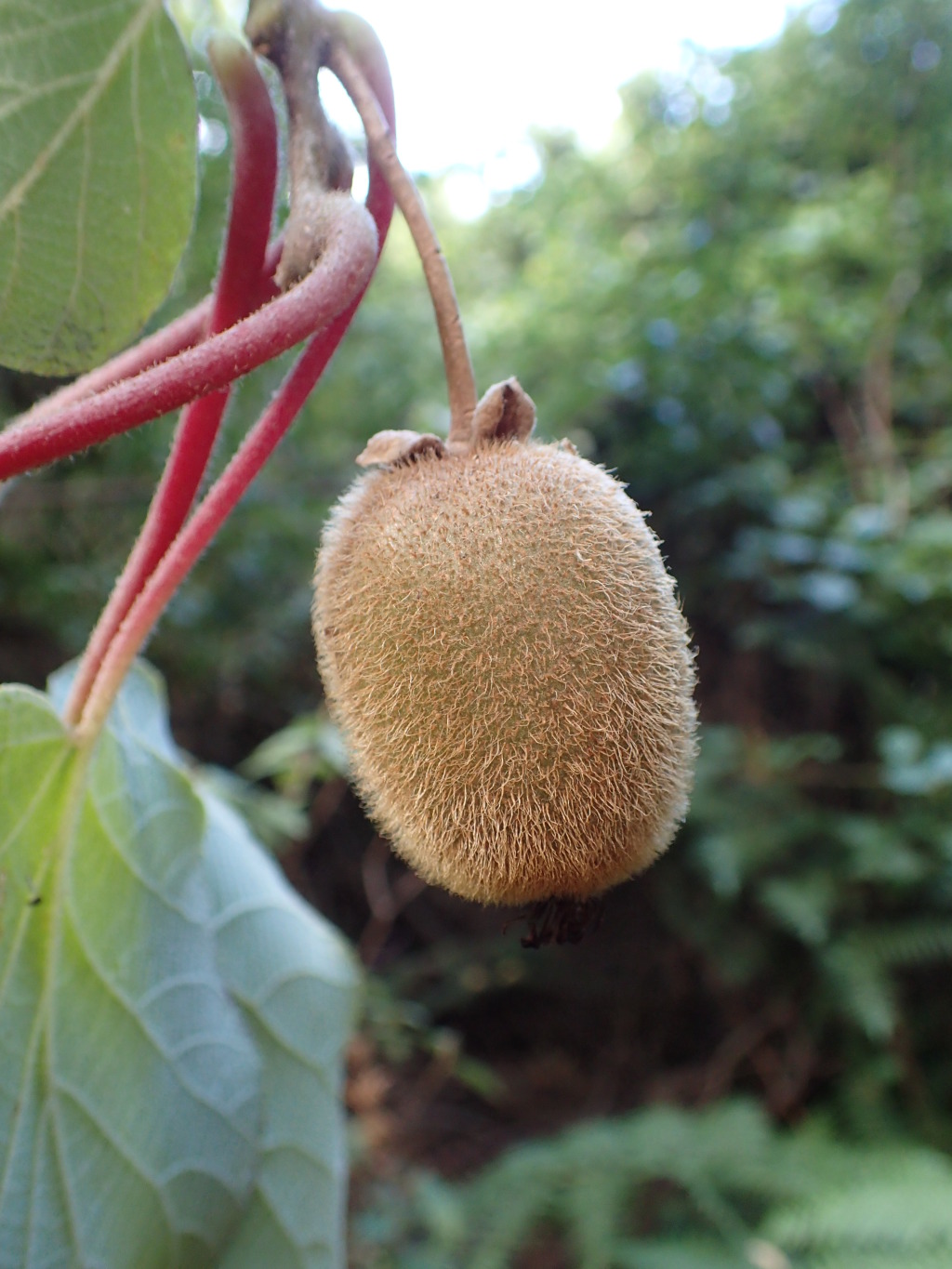Actinidia chinensis var. deliciosa
A.Chev. KiwiDioecious, deciduous woody vine; stems bristly. Leaves broadly ovate to broadly obovate or suborbicular, 6–17 cm long, 7–15 cm wide, papery, upper surface dark green, sparsely hairy, lower surface pale green, usually densely white- or brownish-tomentose with simple and stellate hairs; margins serrulate, ciliate; apex truncate, emarginate, rounded or shortly acuminate; petioles mostly 3–6 cm long, densely hispid-setose. Inflorescence a 1–many-flowered cyme. Male and female flowers similar but males staminate-only while females have numerous sterile stamens below the 20–40 spreading styles. Sepals mostly 5, 1.2–1.5 cm long, brown-tomentose; petals mostly 5, 1.5–3 cm long, white, soon turning orange-yellow; stamens numerous; ovary brown-tomentose, c. 5 mm diam.; styles 7–8 mm long. Fruit a thin-skinned, ellipsoid or oblong berry, 4–8 cm long, densely covered with short brown bristles; pulp green, seeds numerous, embedded in pulp near central axis of fruit, ovoid, c. 1.5 mm long, 1 mm wide, dark brown. Flowers spring.
HSF, HNF. Also ?NSW. Native to China, widely cultivated and commercially grown for its edible fruits. In Victoria, plants are known to occasionally escape cultivation, found in gullies and other wet areas, in the dense understorey of wet forest (e.g. Beenak area, Dandenong Ranges). Seeds are presumably spread by birds or other animals such as deer.
This variety is sometimes regarded as a distinct species, Actinidia deliciosa (A.Chev.) C.F.Liang & A.R.Ferguson.
 Spinning
Spinning


